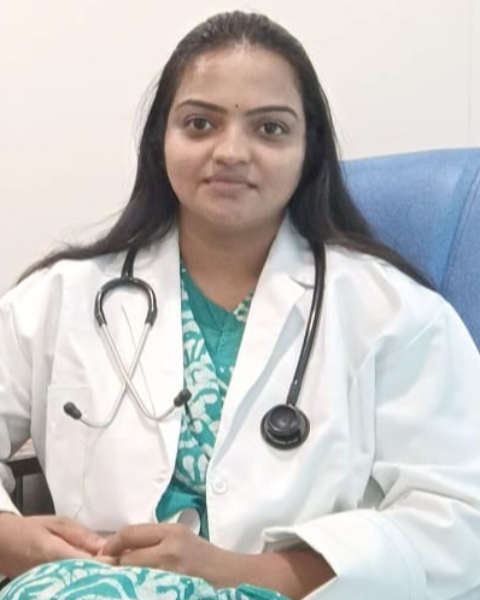PQA 06 - PQA 06 Biology and Patient Reported Outcomes/QoL/Survivorship Poster Q&A
2879 - Mitophagy Promoting Fasting Diet Positioned Radiation Therapy for Harmonizing Dysregulated Cellular Energetics in Locally Advanced Non Metastatic Cancers: Conceptual Comparative Clinical Application S
Monday, September 30, 2024
5:00 PM - 6:00 PM ET
Location: Hall C
Screen: 10

Krithikaa Sekar, MD, MBBS
Healthcare Global Enterprises Ltd.
Bangalore, Karnataka
Presenter(s)
K. Sekar1, E. Satiaraj2, A. Ram2, S. Suresh3, A. K. BS3, and G. Lohith4; 1HCG Hospitals, Bengaluru, karnataka, India, 2hcg hospitals, bengaluru, karnataka, India, 3Health Care Global Enterprises Ltd, Bangalore, India, 4Immuno-Rad Lab , HCG Hospitals, BANGALORE, India
Purpose/Objective(s): Investigating the clinical application of the Warburg effect, specifically focusing on mitochondrial oxidative phosphorylation dysfunction and its consequential alterations in energy metabolism between cancer and normal cells. This is the first human based clinical study aiming to evaluate the therapeutic implications of leveraging fasting states, wherein mitophagy is promoted for normal cell repair, while cancer cells, experiencing glycolytic arrest during fasting, become susceptible to radiation therapy and, hence enhancing the therapeutic efficiency. Materials/
Methods: Adopting intermittent fasting for 14 hours in conjunction with radiation delivery, we conducted a study involving 30 patients in each group [Group A-Fasting, Group B-No fasting] with locally advanced non metastatic cancers undergoing definitive radiation. Daily documentation of blood sugar levels ensured maintenance within the range of 80-90 mg/dL prior to radiation. Response assessments using cross sectional imaging (CT and MRI) were done at mid-radiation, end of radiation, and 3-month follow-up and compared between the two groups. Acute toxicity was evaluated using RTOG criteria.
Results: The treatment site and stage [Glioblastoma/oesophagus/ Rectum/Lung/Oropharynx and Larynx] were equally distributed between the 2 groups. The mean volume in cc of Gross tumor volume was 38.9cc in Group A and 37.7cc in Group B. There was a 11% and 29.8% reduction in mean tumor volume at 30Gy and at the end of RT in Group A whereas 0% and 10.1% in Group B respectively. This showed a trend towards early response in fasting group and statistically repeated Measures Anova test showed significant p<0.001 within the subject effect and insignificant p<0.254 between subject effect. Contingency tables and ?² Tests showed significantly higher complete response rates at 3 Month in the fasting Group with non-inferior and slightly improved acute toxicity profile in the fasting group.
Conclusion: In conclusion, fasting state radiation therapy demonstrates promising outcomes, exhibiting enhanced response rates at the 3-month mark, accompanied by a notably accelerated time to response during the radiation period. Moreover, the observed reduction in acute toxicity further underscores the potential benefits of incorporating fasting into radiation therapy protocols. These findings suggest a favorable impact on treatment efficacy and tolerability, emphasizing the merit of further exploration and consideration of fasting strategies in cancer therapy paradigms.
Purpose/Objective(s): Investigating the clinical application of the Warburg effect, specifically focusing on mitochondrial oxidative phosphorylation dysfunction and its consequential alterations in energy metabolism between cancer and normal cells. This is the first human based clinical study aiming to evaluate the therapeutic implications of leveraging fasting states, wherein mitophagy is promoted for normal cell repair, while cancer cells, experiencing glycolytic arrest during fasting, become susceptible to radiation therapy and, hence enhancing the therapeutic efficiency. Materials/
Methods: Adopting intermittent fasting for 14 hours in conjunction with radiation delivery, we conducted a study involving 30 patients in each group [Group A-Fasting, Group B-No fasting] with locally advanced non metastatic cancers undergoing definitive radiation. Daily documentation of blood sugar levels ensured maintenance within the range of 80-90 mg/dL prior to radiation. Response assessments using cross sectional imaging (CT and MRI) were done at mid-radiation, end of radiation, and 3-month follow-up and compared between the two groups. Acute toxicity was evaluated using RTOG criteria.
Results: The treatment site and stage [Glioblastoma/oesophagus/ Rectum/Lung/Oropharynx and Larynx] were equally distributed between the 2 groups. The mean volume in cc of Gross tumor volume was 38.9cc in Group A and 37.7cc in Group B. There was a 11% and 29.8% reduction in mean tumor volume at 30Gy and at the end of RT in Group A whereas 0% and 10.1% in Group B respectively. This showed a trend towards early response in fasting group and statistically repeated Measures Anova test showed significant p<0.001 within the subject effect and insignificant p<0.254 between subject effect. Contingency tables and ?² Tests showed significantly higher complete response rates at 3 Month in the fasting Group with non-inferior and slightly improved acute toxicity profile in the fasting group.
Conclusion: In conclusion, fasting state radiation therapy demonstrates promising outcomes, exhibiting enhanced response rates at the 3-month mark, accompanied by a notably accelerated time to response during the radiation period. Moreover, the observed reduction in acute toxicity further underscores the potential benefits of incorporating fasting into radiation therapy protocols. These findings suggest a favorable impact on treatment efficacy and tolerability, emphasizing the merit of further exploration and consideration of fasting strategies in cancer therapy paradigms.
